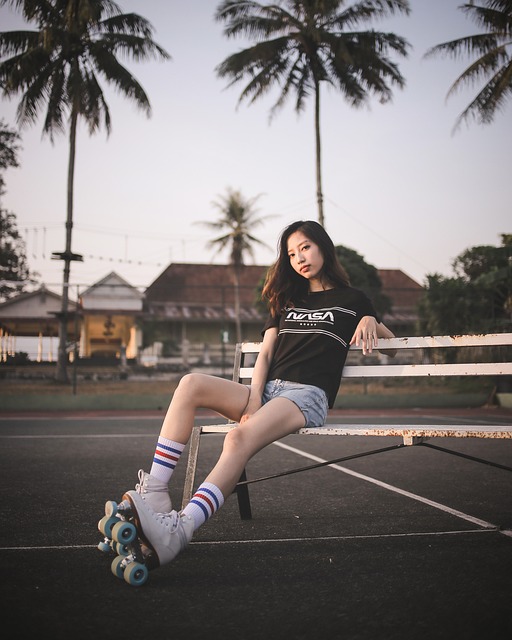In today's digital era, users demand sophisticated websites that offer seamless navigation, instant responses, and intuitive interfaces on all devices. The latest web design trends prioritize minimalism, responsive design, micro-interactions, voice search optimization, personalization at scale, accessibility, VR/AR integration, and sustainability. These trends aim to create visually appealing, easy-to-use sites tailored to individual preferences and behaviors, enhancing user experience and engagement across diverse platforms.
In the dynamic landscape of web design, understanding the latest trends is crucial for creating engaging user experiences. From evolving user expectations that demand intuitive interactions to immersive technologies like VR/AR integration, the modern web demands a blend of aesthetics and functionality. This article explores the hottest web design and user experience trends shaping the digital world, including minimalism, responsive design, micro-interactions, accessibility, and sustainable practices. Discover how these innovations are transforming online interactions for good.
Evolving User Expectations: How Modern Users Interact with Websites

In today’s digital landscape, user expectations for websites have evolved significantly, driven by the latest web design trends and an ever-increasing array of online experiences. Modern users are more demanding than ever, expecting seamless navigation, instant responses, and intuitive interfaces across all devices. They want websites to be visually appealing, easy to use, and tailored to their unique preferences and behaviors. This shift is largely due to the abundance of high-quality, user-centric design practices that have set a new benchmark for interactivity and accessibility.
Web designers must stay abreast of these evolving trends to meet these heightened expectations. The latest web design trends emphasize clean, minimalist aesthetics combined with dynamic interactive elements. Responsive design has become a fundamental requirement, ensuring websites adapt seamlessly to various screen sizes and orientations. Additionally, there’s a growing emphasis on user personalization, leveraging data-driven insights to create tailored experiences that cater to individual needs and preferences.
Minimalism and Simplicity: The Rise of Clean Design Esthetics

In the realm of web design, minimalism and simplicity are reigning supreme as the latest web design trends. Clean, uncluttered designs are gaining popularity, emphasizing functionality and user experience over aesthetic overload. This shift towards a more minimalistic approach is not just a design choice; it’s a strategic move to enhance navigation and engagement. By stripping away unnecessary elements, designers create environments that allow users to focus on content, leading to improved interaction and conversion rates.
The rise of clean design esthetics reflects a growing user preference for intuitive and straightforward interfaces. In today’s digital era, where users are constantly bombarded with information, a minimalist approach offers a breath of fresh air. It simplifies complex tasks, making websites more accessible and appealing to a broader audience. This trend is not just about visual appeal; it’s about creating sustainable and efficient online experiences that cater to the modern user’s needs.
Responsive Design Advances: Adapting to Every Screen Size

In the realm of web design, responsive design has emerged as a leading trend in the latest web design trends. The advancement in technology means users now access websites from a wide array of devices—from desktops to tablets and smartphones. Responsive design ensures that every screen size is accounted for, providing an optimal user experience regardless of the device used. This approach involves using flexible layouts, images, and CSS media queries to adapt content and visual elements seamlessly.
By embracing responsive design, web developers can create dynamic and engaging interfaces that cater to a diverse range of users. It’s no longer about designing for one specific size but for an array of them, ensuring the website remains aesthetically pleasing and fully functional across all platforms. This trend not only enhances user satisfaction but also improves search engine rankings, making it a vital consideration in today’s digital landscape.
Micro-interactions and Animations: Enhancing User Engagement

In the realm of latest web design trends, micro-interactions and animations have emerged as powerful tools to enhance user engagement. These subtle yet dynamic elements bring interfaces to life, providing users with immediate feedback and creating a more intuitive experience. By incorporating animated transitions, subtle visual cues, and interactive elements, designers can make websites feel more responsive and engaging.
Micro-interactions and animations not only improve the aesthetic appeal but also serve as crucial guiding signals for users, helping them navigate through complex web architectures effortlessly. As today’s folks browse the web on diverse devices, these trends ensure that user experiences remain captivating and consistent, fostering a deeper connection between users and digital platforms.
Voice Search Optimization: Tailoring Content for Virtual Assistants

As voice search continues to gain popularity, optimizing web content for virtual assistants is becoming essential in the latest web design trends. With users increasingly relying on devices like Siri, Alexa, and Google Assistant to find information, websites need to adapt their content strategy accordingly. This involves using conversational language, incorporating natural keywords, and structuring data in a way that facilitates voice search queries. By optimizing for voice, designers can ensure that content is easily discoverable and accessible to a broader audience.
In addition, understanding the intent behind voice search queries is crucial. Unlike traditional text searches, voice queries are often more direct and action-oriented. Web designers should create content that addresses specific user needs or tasks, such as providing quick answers, offering step-by-step instructions, or directing users to relevant pages. Tailoring content for virtual assistants not only improves search visibility but also enhances the overall user experience by delivering accurate and useful information promptly.
Personalization at Scale: Creating Customized Online Experiences

In the realm of latest web design trends, personalization at scale is transforming online experiences from generic to tailored. Technologies like AI and machine learning enable dynamic content delivery, allowing websites to adapt to individual user preferences in real time. This means personalized product recommendations, customized layouts, and interactive elements that resonate with each visitor uniquely. By leveraging data analytics, businesses can create micro-segments of users based on behavior, demographics, or interests, ensuring every online interaction feels relevant and engaging.
Beyond enhancing engagement, personalization at scale fosters trust and loyalty. Users appreciate when websites recognize their needs without excessive tracking. This trend not only improves user experience but also drives conversions by presenting visitors with content and offers that align precisely with their interests. As the digital landscape evolves, expecting a one-size-fits-all approach to online interactions becomes increasingly outdated; personalization is the new standard in web design.
Accessibility as a Core Principle: Designing for All Users

In the realm of web design, accessibility has emerged as a paramount principle in the latest web design trends. It’s no longer an afterthought but a foundational element that ensures every user, regardless of ability or age, can navigate and interact with digital spaces seamlessly. By adopting inclusive design practices, developers and designers are creating websites and applications that cater to a broader audience, fostering a more engaging and equal online experience.
This shift towards accessibility is driven by the understanding that digital products should be usable by people with various disabilities. From color contrast improvements to keyboard navigation support, these considerations make web content more accessible. As the web continues to evolve, embracing universal design principles not only enhances user experience but also expands the potential reach and market penetration of online platforms.
Immersive Technologies: VR/AR Integration in Web Design

The integration of Virtual Reality (VR) and Augmented Reality (AR) technologies is one of the most exciting developments in the latest web design trends. This immersive experience allows users to engage with digital content in a three-dimensional space, blurring the lines between physical and virtual worlds. Web designers are leveraging VR/AR to create dynamic and interactive websites that offer users a unique, first-person perspective. From virtual tours of products or spaces to augmented reality filters and games, these technologies are enhancing user experiences and opening up new possibilities for storytelling and interaction.
In the context of the latest web design trends, VR/AR integration is not just about creating novel experiences; it’s also about improving accessibility and usability. For example, AR can assist users in visualizing products or spaces in their own environments, while VR can provide a controlled and safe space for training simulations or therapeutic applications. This shift towards immersive technologies reflects a growing understanding of user needs and desires, ensuring that web design continues to evolve and adapt to deliver richer, more meaningful experiences.
Sustainable and Eco-friendly Web Design Practices

In line with the latest web design trends, sustainable and eco-friendly practices are gaining significant traction. Designers and developers are increasingly acknowledging their role in reducing environmental impact, incorporating principles like energy efficiency, renewable materials, and carbon neutrality into web projects. This shift reflects a broader societal movement towards sustainability, with digital solutions playing a pivotal role in mitigating ecological challenges.
These eco-conscious approaches extend beyond mere aesthetics; they involve efficient coding techniques to minimize resource consumption, leveraging renewable energy sources for data centers, and utilizing recycled or biodegradable materials in website interfaces. As consumers become more aware of their digital footprints, websites that embrace sustainability are not only contributing to a healthier planet but also fostering trust and loyalty among their audiences.
